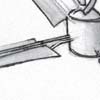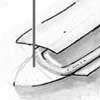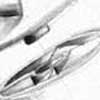





The radiator functions as an active heat exchanger rather than a passive model in that the actual exchanger portions are rotated through the air by means of a simple turbine which works through the harnessing of pressure that the steam system inherently contains. The advantage being that the system is more efficient as it forces greater contact with the ambient air. Since the heat exchanger's surfaces are moved across more air, their size can be diminished while still maintaining similar heating numbers. While it is easy to assume that it would have, in-fact, less efficiency by being mounted at the top of the room, this is offset by the active manner in which the unit treats convective heating as well as providing a secondary benefit by moving the air downward, producing a greater circulatory air system in each room.
Benefits
Turns the concept of the radiator from a passive convective heat exchanger to an active version
Moves the air as well as heats the air.
Relocates the radiator to an under-utilized portion of the room, the ceiling, and frees up valuable floor space
Creates a subtle covective heating system in room
As it is not completely charged with pressure at all times, it can work as an air chamber, reducing any sort of steam 'water hammering' effects common with the pulsation of older systems.
Operation
The operation of the unit begins by sending steam through the two send lines which terminate at a set of nozzles. These nozzles take the steam and focus the pressured steam upon a rudimentary turbine blade system. After exerting force upon the turbine for rotation, the steam is then distributed to the heat exchanger blades. The blades are made up of thin wall, small diameter tubing, laid out as a long loop. Upon this loop two heat sinks are attached. The heat sinks are set curved and opposing each other to create eddies and break up any sort of laminar flow. The blades are also set to force the air down, creating a subtle convection system within the room. On return from the long loop of the blades, the steam is channeled up through the turbine assembly and into the central steam return shaft on the turbine's rotational axis.
Manufacturing
In terms of production, the radiator is essentially rather easy to produce. The blades can be made with thin-wall aluminum, as well as the heat sinks. These can be assembled through elementary brazing. Perhaps the most difficult portion of the system is the machining of the turbine/distributor component. This will obviously have to be at least cast, but probably be machined. The distributor portion of the system could be further redesigned trading of the complexity, for ease of manufacturing.
Bisque Radical Radiator of the Future Competition
2006.